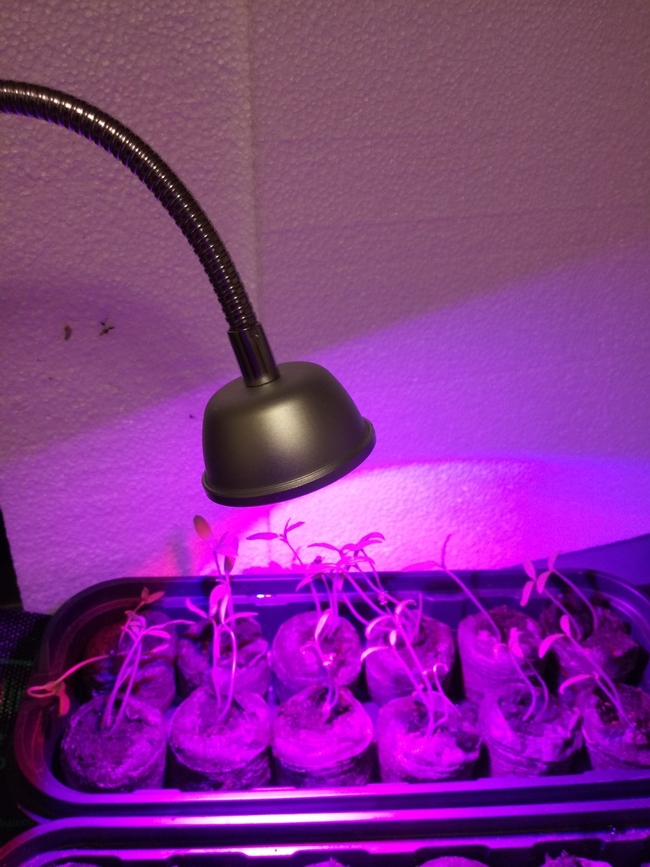Grow Light Basics
Last winter I bought a portable grow light on sale (for $10 with free shipping) to help with indoor seed germination during the winter. I was lucky that the light I bought was exactly what I needed and works great. But if you ever decided to shop online for plant grow lights, you undoubtedly were presented with a multitude of options, ranging from the type of bulb to the light spectrum produced. To determine the best grow light to meet your needs, you should be clear as to why you want a grow light (for example for seed germination, to provide additional light for houseplants, etc.). Next, you first need a basic understanding of the light needs of plants.
Basically, plants need light for three purposes, photosynthesis, phototropism, and photoperiodism. Photosynthesis is the process where plants convert sunlight to chemical energy. In phototropism, growth hormones are produced on the side of the stem causing the plant to lean towards the light so that the leaves are closer to intercepting the light. And photoperiodism involves how the plant reacts to different types of light. These reactions range from seed germination to breaking dormancy and even blooming.
Now let's talk about the light wavelength. Sunlight contains several different wavelengths or colors, like the colors seen in rainbows. Red and blue light spectrums are absorbed by plants and are essential in helping them grow. Red light is essential for seed germination, blossom, and fruit production. Blue light is essential for plant production of chlorophyll and producing strong leaves and stems.
Violet light is said to enhance the taste and aroma of plants. Yellow light is absorbed by the plants but doesn't promote growth as much as red and blue light. Green light is reflected back by the plants. Researchers have conducted numerous studies on the specific wavelengths and ratios needed for specific plants to grow, and in the case of vegetables, to produce best.
Grow lights range from incandescent and fluorescent to LED bulbs. Incandescent lights are a good source of red light, but a poor source of blue light. Because incandescent bulbs generate considerable heat, they need to be located at a distance from the plants, thereby reducing the light intensity. Fluorescent tube lights are available in types that emit particularly red and blue light. They generate little heat and have a life about ten times that of an incandescent light. LED lights produce little heat, are energy efficient and have a long life, but are more expensive than other lights. There are three basic types of LED bulb types for grow lights - bulged reflectors, tubular, and miniature. There are also high-intensity, or gas, discharge (HID) lights which are used primarily in greenhouses.
To learn more about the different types of grow lights, the light spectrum and intensity they produce, their efficiency, and determining the best type of grow light for your needs, see the following documents listed below.
Indoor Lighting for Plants. University of Vermont Extension. https://pss.uvm.edu/ppp/articles/lighting.html
LED Grow Lights for Plant Production. Oklahoma State University Extension Service. April 2017. http://factsheets.okstate.edu/documents/hla-6450-led-grow-lights-for-plant-production/
Lighting Indoor Houseplants. University of Missouri Extension. Revised June 2016. https://extension2.missouri.edu/g6515
“Grow Lights for Indoor Plants and Indoor Gardening: An Overview.” Modern Farmer. March 2, 2018. https://modernfarmer.com/2018/03/grow-lights-for-indoor-plants-and-indoor-gardening/
“How to Talk to Your Plants: Using LEDs to grow better crops.” http://sitn.hms.harvard.edu/flash/2018/how-to-talk-to-your-plants/

photo by Kathy Low


Posted by howard fitzpatrick on March 28, 2020 at 6:53 AM